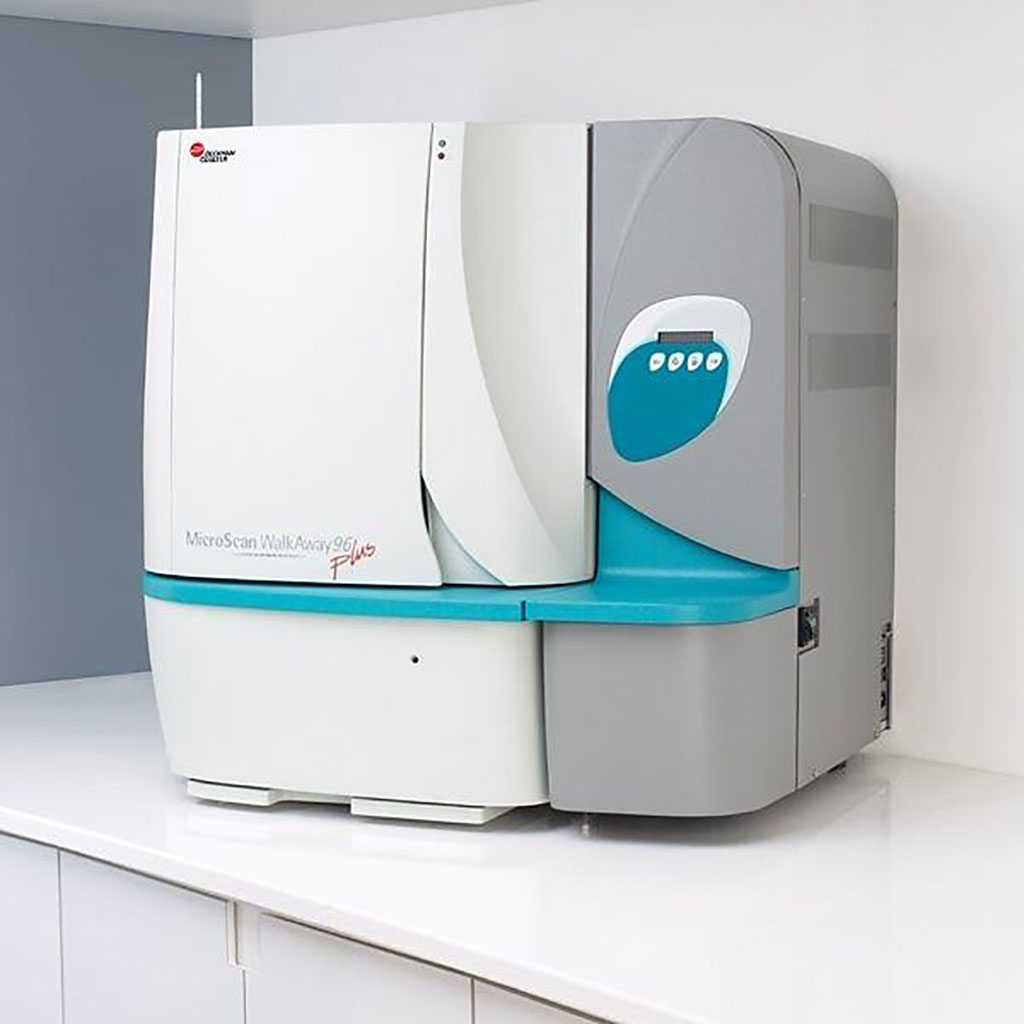MALDI-TOF MS Employed for Early Diagnosis of Bloodstream Infections
By LabMedica International staff writers
Posted on 17 Dec 2020
Bloodstream infections (BSIs) are a major cause of mortality in hospitalized patients. Rapid diagnosis is crucial because any delay in the antimicrobial treatment is associated with an increase in adverse patient outcomes. Posted on 17 Dec 2020
The routine identification of microorganisms in clinical microbiology laboratories is carried out by applying different tests, such as phenotypic essays based on microscopic, macroscopic, and biochemical analyses that allow determining their metabolic requirements, either manually or by automated systems.

Image: The MicroScan WalkAway 96 Plus Microbiology System (Photo courtesy of Beckman Coulter).
A team of Medical Microbiologists at the Pontificia Universidad Javeriana (Bogotá, Colombia) analyzed 470 positive blood cultures from 190 patients’ samples using Standard Aerobic/F and Anaerobic/F blood culture media. Isolates were identified using conventional identification methods and by the direct method using the matrix-assisted laser desorption ionization-time of flight (MALDI-TOF MS) system.
All blood cultures were incubated in the BacT/ALERT blood culture system (bioMérieux, Marcy-L’Etoile, France). All isolates were identified using both conventional methods MicroScan WalkAway 96 Plus (Beckman Coulter, Brea, CA, USA), and MALDI-TOF MS.
The protein mass spectra were analyzed using the Flex Control software and the MALDI Biotyper version 3.1 7311 reference spectra (main spectra) (Bruker Daltonics, Bremen, Germany).
The team reported that in 470 blood cultures, the direct method showed good identification results (420/470, 89%); specifically, accurate species and genus identification in 283/470 (60%), and only correct genus identification in 137/470 (29%). The direct protocol had better performance for Gram-negative compared to Gram-positive bacteria (97% versus 76%) and was unable to identify the positive blood cultures for both yeasts and some bacteria, mostly Gram-positive (50/470).
The direct method was unable to identify the positive blood cultures for yeasts and for some bacteria such as Staphylococcus aureus 15/52, coagulase negative staphylococci 11/33, Salmonella spp. 3/3, Streptococcus salivarus 2/2, Actinomyces naeslundii 1/1, and Cutibacterium acnes 1/1. However, all strains of Staphylococcus aureus or coagulase negative staphylococci were identified through the conventional method.
The authors concluded that accurate identification of the pathogen species that cause an infection is paramount. Their study provided a rapid and easy method for the direct identification of pathogens from positive blood cultures. The in-house protocol used gave good and reliable results for Gram-negative bacteria and may be helpful for the identification of some Gram-positive bacteria. This allowed better use of the robust MALDI-TOF technology with results available up to 24 hours earlier, which could positively impact the treatment of patients. The study was published on December 1, 2020 in the International Journal of Infectious Diseases.
Related Links:
Pontificia Universidad Javeriana
bioMérieux
Beckman Coulter
Bruker Daltonics













